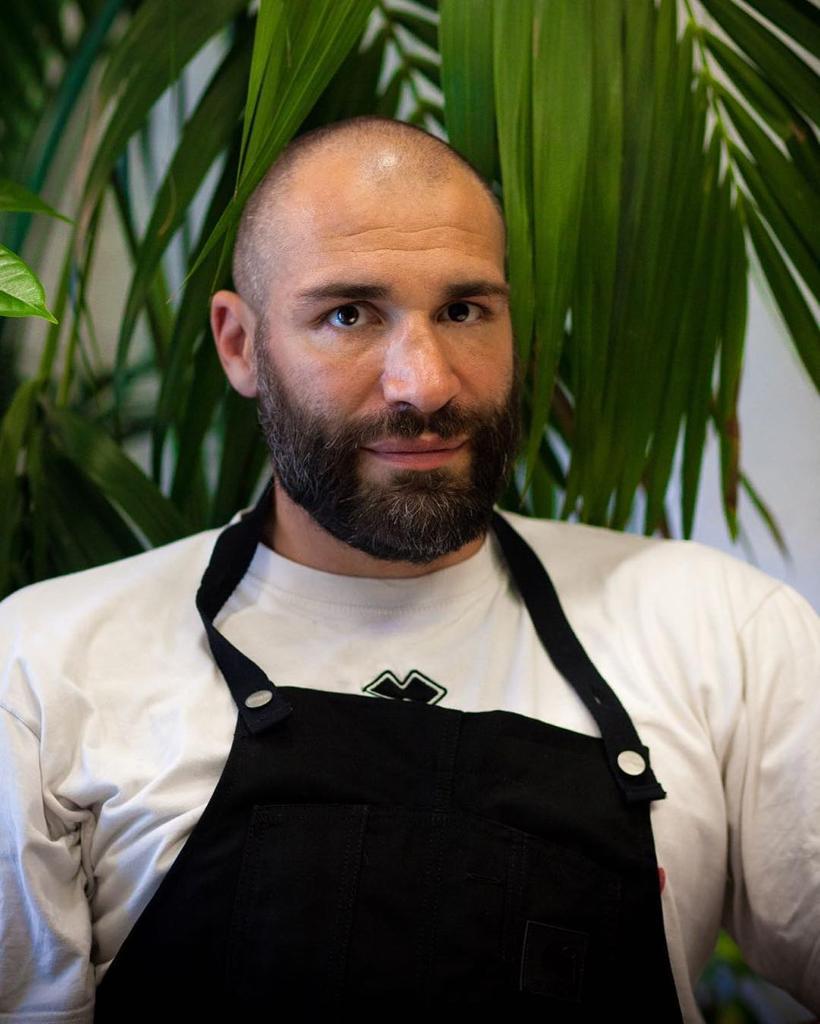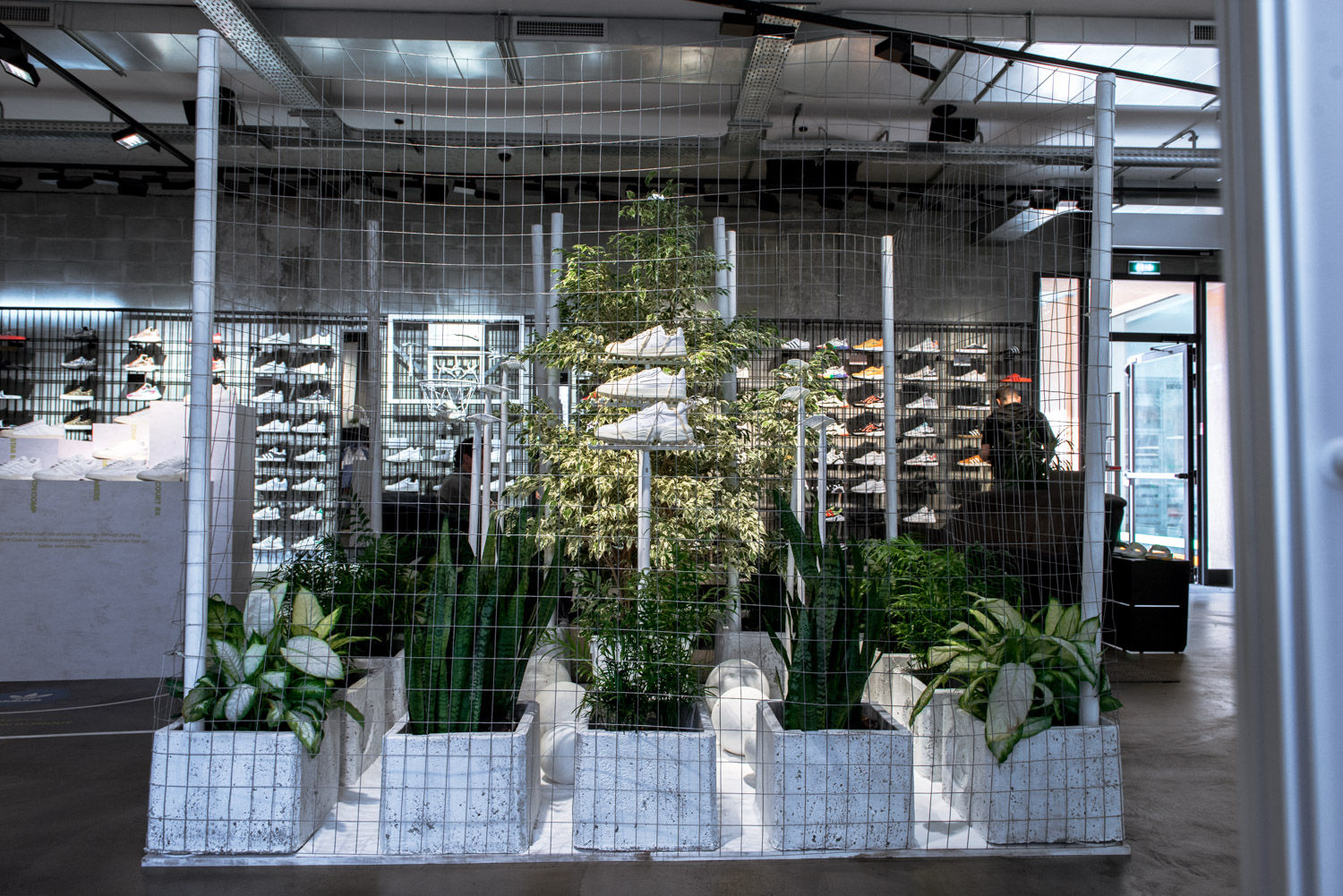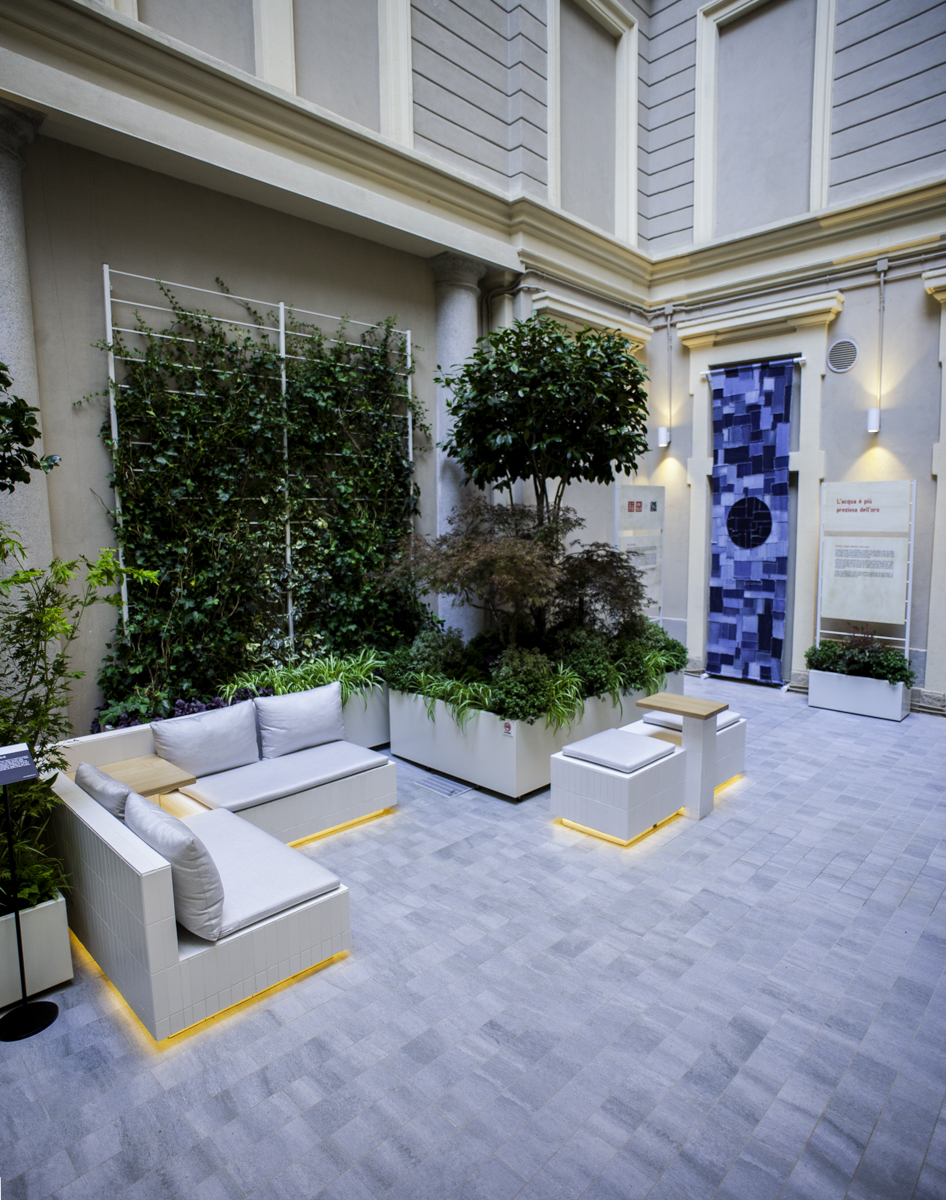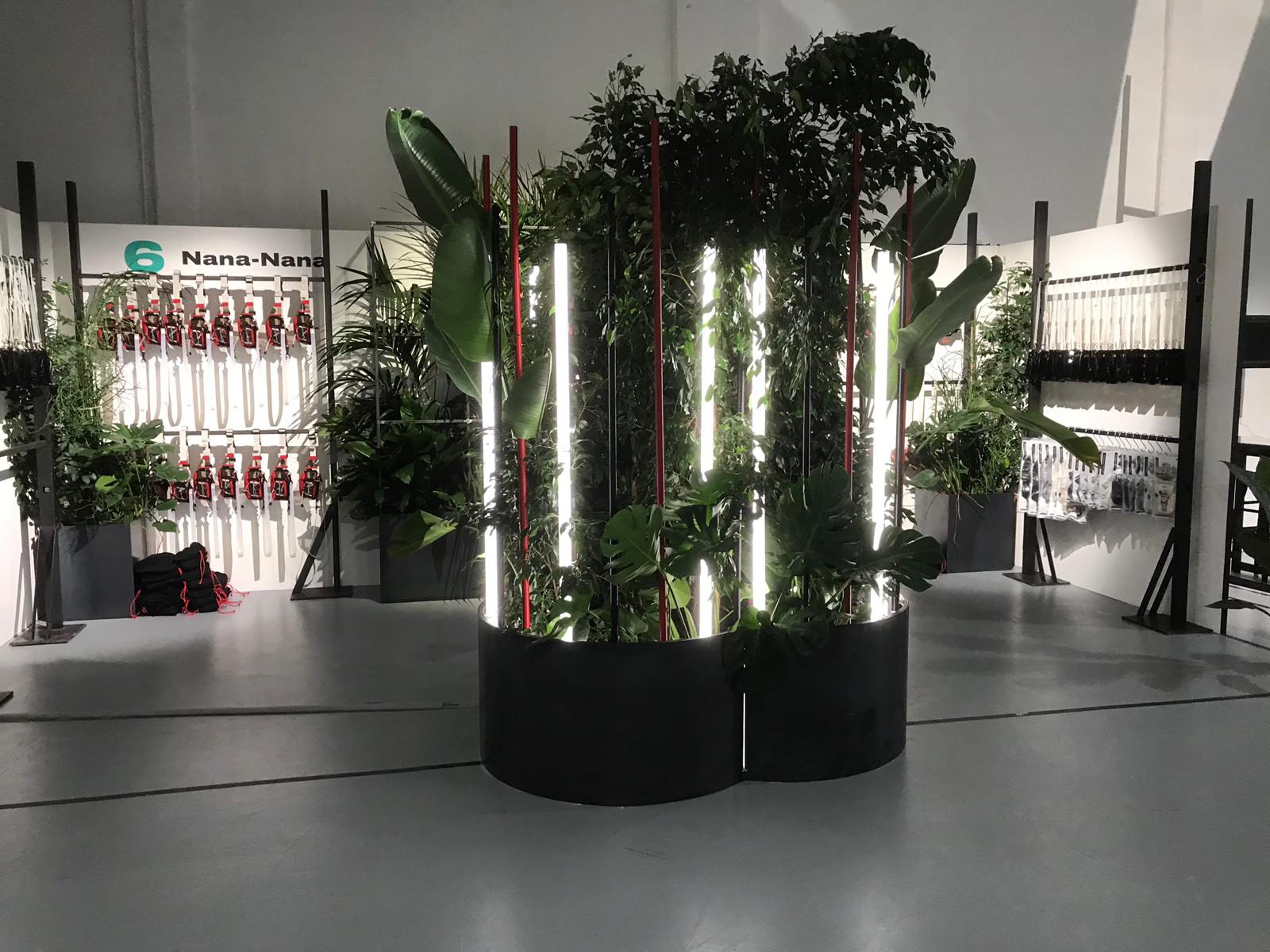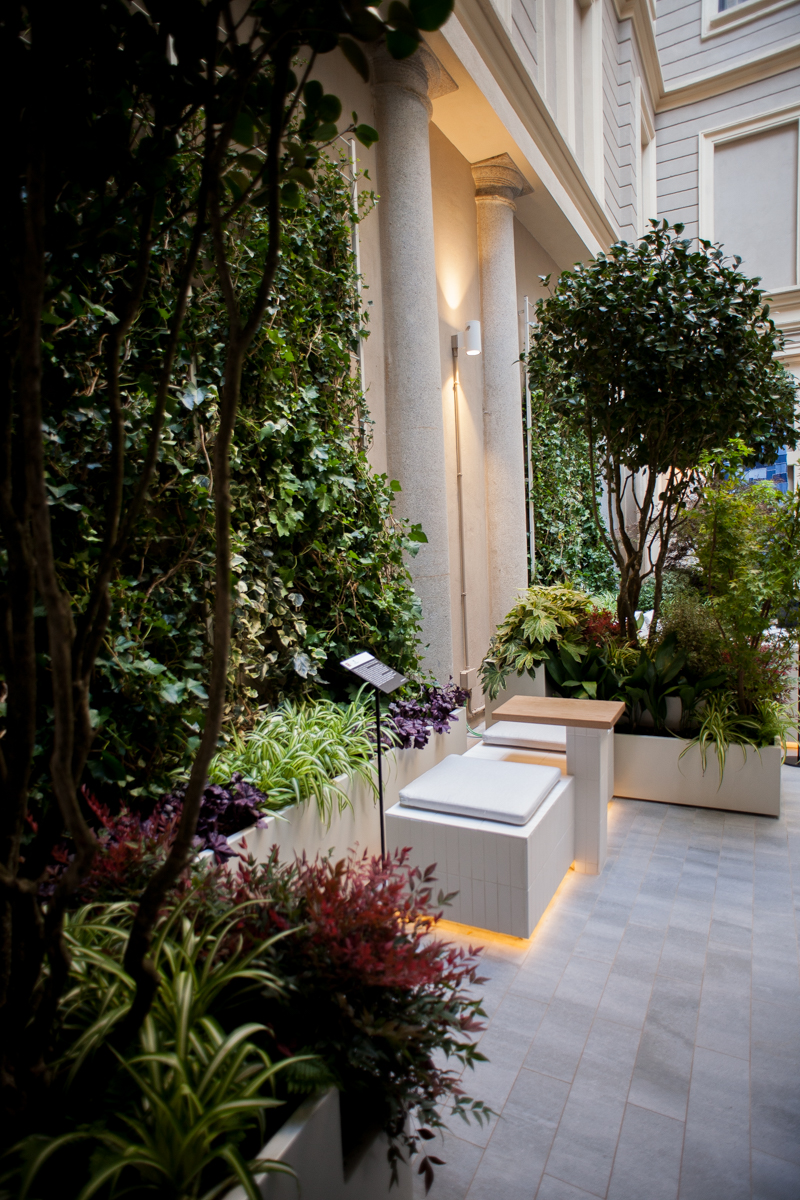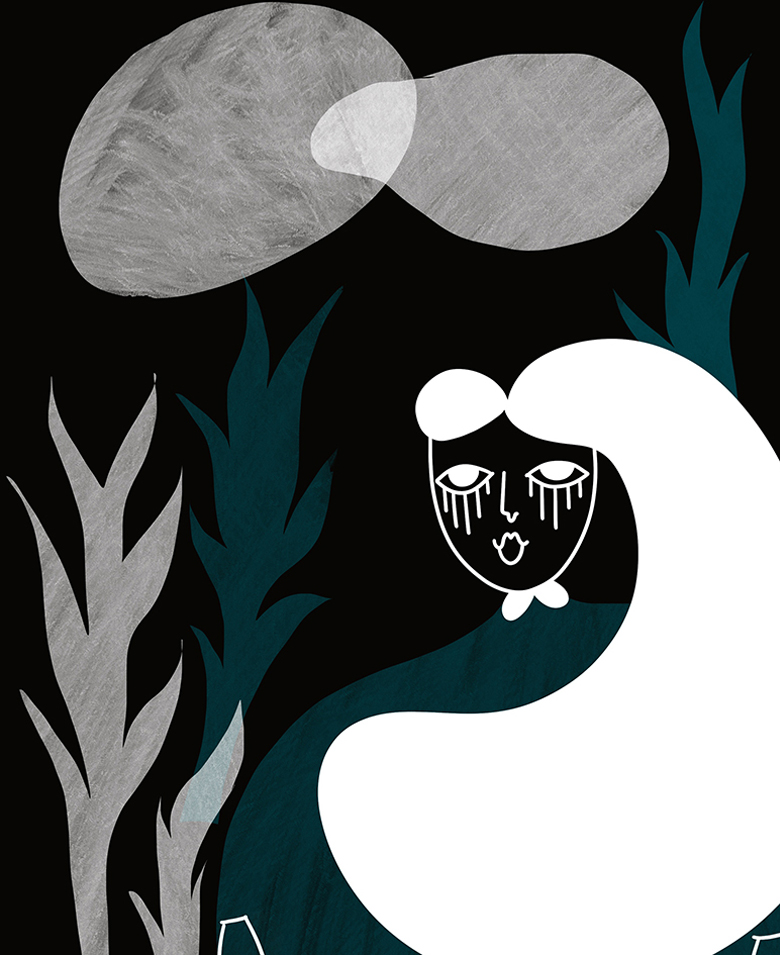#TheBotanicalIssue
Let's talk
ODD GARDEN: THE UNCOMMON GARDEN STUDIO OF VIA ARQUA’, MILAN
// A chat with Matteo Foschi of Odd Garden about nature, the city and our relationship within them.
AN INTERVIEW BY AMANDA LUNA BALLERINI
Amanda. Taking an idea and putting it at the service of vegetation and vice-versa. Installations and products that make you think, and welcome, in its most varied forms, the strangeness, and beauty of nature. This is the first reflection I think of when looking at your work. How would you describe what you do to a person who doesn’t know you?
Matteo. I like to describe Odd Garden as a creative studio with a focus on plants. Odd Garden’s starting idea is creativity, we play with the elements and find different solutions for each work.
It is a question of reinterpreting gardening, taking something that was already there, recovering all the positive sides and adding new ones, to actualize a noble and very ancient discipline.
I believe that the key is progress: using new knowledge, new technologies to arrive at a new aesthetic and use of plants and green spaces, both indoors and outdoors.
Amanda. Your work, at first glance, reminds me of a wonderful exhibition that I saw a few years ago in Villa Panza, Varese, ‘Natura Naturans’, a double solo show dedicated to Roxy Paine and Meg Webster, two-generation and different languages, which start from opposite points of view but are united by an idea of nature as a continuous cycle of growth and transformation.
It was created in a moment that slightly ‘anticipated’ the moment we are in today, where the dialogue between nature and interior spaces becomes not only something fundamental, but necessary. First of all, I ask you if you are familiar with the work of the artists and if on your side, you had other ‘guiding’ figures who inspired you to start the project.
Matteo. I know the works of the two artists although I hadn’t the opportunity to visit the exhibition. I had the pleasure of collaborating with Linda Tegg for an installation created in Milan during the Salone del Mobile 2019 ‘Adjacent Field’ and with Edoardo Tresoldi for the realization of ‘Gharfa’ in Riyadh (KSA).
I realize that besides the attention paid by a huge amount of people, plants are becoming increasingly used medium by artists.
I like artistic experimentation, it leaves enormous freedom in space management and enhances the aesthetic properties of plants both as single elements and in composition. Another aspect that I appreciate very much in artistic compositions is the possibility of being inconsistent in the choice of essences. There are no physical rules, unlike in gardening. I can create compositions using plants of any type, creating combinations listed according to my taste and my perception of that specific space.
As for the ‘birth’ of Odd Garden I have never had specific references. I thought about what I would have liked to do, what the development possibilities were and I just went for it. Everything was supported by a careful study of both gardening and garden design. This brought me to the knowledge of realities which, in retrospect, have become inspirations.
Amanda. I find very interesting the work you created in collaboration with Linda Tegg for Jil Sander during the last Salone del Mobile, ‘Adjacent Fields’. Spontaneous plants, something we often try to forget, are the demonstration that there is no real separation between city and nature, but rather they are (sometimes, unfortunately) contaminating continuously. What does this make you think of?
Matteo. It’s kind of a mess if you’re a kid with a passion for nature and you’re born in Milan. My first readings were all aimed at zoology and ethology. My heroes at the time were Konrad Lorenz and Gerald Durrel. Both had had direct experiences with wild nature since childhood. I found myself playing on the sidewalks and the maximum of my naturalistic experience was the park of Porta Venezia and the Museum of Natural Sciences (my second home in all the years of childhood).
‘Adjacent Field’ immediately attracted my attention because I immediately found a strong link both with the concept and the work itself.
I started this job driven by several experiences that have marked my life, including the many trips that I had the luck to make since I was very young. Trips that took place in a pre-internet period and that made me discover new worlds and new perspectives.
I grew up with a great love for both nature and architecture, especially urban planning.
One of my most vivid memories of this is Cape Town in ’95. It was something totally out of my perspective at the time, nature was everywhere and the interaction with the city was more than evident. I perfectly remember how strongly the vegetation clashed with buildings and artifacts, any corner without concrete was a foothold for gigantic plants that loudly recriminated their right to be where they were. From that experience, my interest in this type of interaction was born and it marked my aesthetic.
Amanda. I think of the importance it has today to re-evaluate especially the peripheral areas adjacent to metropolitan centers. Instead of building ‘concreting’, building ‘planting’. Do you have any positive examples of this type of approach?
Matteo. There are many examples of urban redevelopment linked to the use of plants.
The most striking is certainly Singapore, where, since 2008, strict rules have been in force on the use of green in new buildings and which has been transforming itself into a green city for more than 10 years now.
There are many examples around the world of green redevelopment and the first that comes to mind and that I witnessed is Millennium Park in Chicago, a former parking lot transformed into a multifunctional park, where art installations, auditoriums, and a public park coexist, and Lurie Garden, the most beautiful example of an urban garden I have ever seen.
Amanda. Do you think that nature always wins as the most ‘invasive’ force?
Matteo. Until now nature has always won and will always win. Humans often forget that they do, and consequently what they leave on this planet, is a manifestation of nature and consequently that whatever happens in the future will still be a natural event.
Leaving philosophy on the side, I believe that the relationship between human beings and cultivated plants (absolutely to be distinguished from wild ones, whether they are fruit trees or the grandmother’s Christmas star) can have excellent implications, especially on a psychological and sociological level. There is no green thumb. The commitment to managing a living creature; finding feedback in one’s commitment, both personally and socially; having to respect times and rules not related to conventions. These are the gifts of a good relationship with plants as well as creating a much more beautiful and liveable environment.
Amanda. In your opinion, what are the elements that can make the city a comfortable place to live? Do you think it is possible or is it always necessary to ‘run away’ (for a weekend, a day, an hour..)
Matteo. As I have already said, there are many examples of redevelopments that have transformed entire cities, giving its inhabitants and visitors decompression spaces, where they can interact with nature, art, sport, and entertainment.
This does not detract from the unique value of the trip (which can last a day or a lifetime). I consider it an irreplaceable tool for personal growth and at the same time a way to understand, interpret and further appreciate the spaces of your city.
Amanda. Which work has represented the biggest challenge until now?
Matteo. Without any doubt, the creation of “Adjacent Field” was complex and required great planning and organizational capacity. However, I consider it only the appetizer for what awaited us later and that is the realization of ‘Gharfa’ in Riyadh.
Let’s say that this last one was not only a monumental job but also a great practice of life both professionally and personally.
It required a lot of preparation from a technical point of view, we had to adapt irrigation systems and ways of planting the plants to Edoardo Tresoldi’s networked structures, which involved experimentation lasting about a couple of months both in Milan and on-site. To all this must be added the logistical and relational difficulties in a country so culturally and climatically distant from ours.
Amanda. Any movies that remind you of the work you do?
Matteo. Among my various passions that have not become professions, there is absolutely cinema!
I have always been a fan and for a period of my life I thought of making it a job, first as a production assistant, then a toolmaker and assistant set designer. A parenthesis that lasted about three years that left me with a marked admiration for cinematographic art, a great inspiration for me.
There are many films in which the presence of plants is fundamental, a concrete example is the presence of green in two great Kubrick war films: Barry Lindon and Full Metal Jacket. In the first the bright green of Great Britain and Europe contrasts with the uniforms and colorful clothes typical of the time, in the second the olive green of the uniforms mixes with the lush green of the tropical jungle making the characters and the environment one thing as if they had been swallowed by it.
Spike Lee’s aesthetic is expressed with many references to the interaction between green and urban environments. In this case, however, this is not a direct interaction with the scene, but it is evident in the montage where many single frames that reproduce architectural details and plant elements are edited in such a way as to be the individual glances of an observer present in the scene. And it is this choice that highlights how important the details (in this case the plants) are to create an intimate vision of the work.
The scene related to vegetation that I consider most significant for my inspiration and that is certainly always clear in my mind belongs to another film on the Viet Nam war. (Apocalypse Now, 1979). This is the encounter with the tiger in the forest along the Mekong river. In that scene the two protagonists find themselves dispersed, almost suspended, in a tangle of plants where huge Taro plants stand out, whose giant leaves make the environment almost alien, underlining the drama of the moment and, at the same time, making it all the scene even more surreal in its ruthless reality.
We could go on and on with the quotes, but I think that in reality, every single film I have seen is inspirational from a landscape point of view. Even in the most sinister American romantic comedy, I can perceive what are the interesting aspects of the landscape and it has become a constant exercise to recognize the plants of every single movie I watch.
–
Words Amanda Luna Ballerini
Photo Courtesy of Odd Garden
*
*
*
ITA
*
*
*
Amanda. Prendere un’idea e metterla al servizio della vegetazione e viceversa. Delle installazioni e prodotti che ti fanno pensare, e accolgono, nelle sue forme più svariate, la stranezza e bellezza della natura. Questa è la prima riflessione a cui penso guardando il vostro lavoro. Come descriveresti quello che fate ad una persona che non vi conosce?
Matteo. Mi piace descrivere Odd Garden come uno studio creativo con un focus sulle piante. L’idea di partenza di Odd Garden è proprio la creatività, giochiamo con gli elementi e troviamo soluzioni diverse per ogni singolo lavoro.
Si tratta di reinterpretare il giardinaggio, prendere qualcosa che c’era già, recuperare tutti i lati positivi ed aggiungerne di nuovi, in maniera da attualizzare un disciplina nobile ed antichissima.
Credo che la chiave sia il progresso: utilizzare le nuove conoscenze, le nuove tecnologie per arrivare ad una nuova estetica ed una nuova fruizione delle piante e degli spazi verdi, sia in interno che in esterno.
Amanda. Il vostro lavoro, a primo impatto, mi ricorda di una mostra meravigliosa che ho visto qualche anno fa a Villa Panza, Varese, ’Natura naturans’, una doppia personale dedicata a Roxy Paine e Meg Webster, due artisti americani di generazione e linguaggio diversi, che partono da punti di vista opposti ma sono accomunati da un’idea della natura come ciclo continuo di crescita e trasformazione.
Era stata realizzata in un momento che ‘anticipava’ leggermente il momento in cui siamo oggi, dove il dialogo tra natura e spazi interni diventa non solo qualcosa di fondamentale, ma necessario. Innanzitutto vi chiedo se siete familiare con il lavoro delle artiste, e se dal lato vostro, avete avuto altre figure ‘guida’ per iniziare il progetto.
Matteo. Conosco i lavori delle due artiste anche se non ho avuto modo di visitare la mostra. Ho avuto il piacere di collaborare con Linda Tegg per un installazione realizzata a Milano durante il Salone del Mobile 2019 ‘Adjacent Field’ e con Edoardo Tresoldi per la realizzazione di ‘Gharfa’ a Riyadh (KSA). Mi rendo conto che oltre all’attenzione riversata da un’enorme quantità di persone, le piante stanno diventando un medium sempre più utilizzato dagli artisti.
Mi piace la sperimentazione artistica, lascia un’enorme libertà nella gestione degli spazi (il mio primo vero focus) e esalta le proprietà estetiche delle piante sia come elementi singoli, sia in composizione. Altro aspetto che apprezzo molto nelle composizioni artistiche è la possibilità di essere incoerenti nella scelta delle essenze. Non ci sono dettami fisici a differenza del giardinaggio. Posso creare composizioni usando piante di qualunque tipo, creando accostamenti basati esclusivamente sul mio gusto e sulla mia percezione di quello specifico spazio.
Per quanto riguarda ‘la nascita’ di Odd Garden non ho mai avuto dei riferimenti specifici. Ho ragionato su quello che mi sarebbe piaciuto fare, quali fossero le possibilità di sviluppo e mi sono lanciato. Chiaramente il tutto è stato supportato da un attento studio sia del giardinaggio che del garden design. Questo mi ha portato a conoscenza di realtà che, a posteriori, sono diventate delle ispirazioni.
Amanda. Trovo molto interessante l’opera che hai realizzato in collaborazione con Linda Tegg per Jil Sander durante lo scorso salone del mobile, Adjacent fields. Le piante spontanee, qualcosa di cui molto spesso proviamo a dimenticarci, sono la dimostrazione che non c’è una vera separazione tra città e natura, ma che anzi esse si contaminano (a volte malauguratamente) di continuo. Questo a cosa ti fa pensare? Hai una tua riflessione a riguardo?
Matteo. È un bel casino se sei un ragazzino appassionato di natura e nasci a Milano. Le mie prime letture erano tutte rivolte alla zoologia e all’etologia. I miei eroi all’epoca erano Konrad Lorenz e Gerald Durrel. Entrambi avevano avuto esperienze dirette fin da bambini. Io mi ritrovavo a giocare sui marciapiedi e il massimo della mia esperienza naturalistica era il parco di Porta Venezia e il Museo di Scienze Naturali (mia seconda casa in tutti gli anni dell’infanzia).
‘Adjacent Field’ ha attirato fin da subito la mia attenzione perchè ho trovato subito un forte legame sia con il concept, sia con l’opera in sè.
Ho iniziato questo lavoro spinto da diverse esperienze che hanno contrassegnato la mia vita, tra cui i tanti viaggi che ho avuto la fortuna di effettuare fin da giovanissimo. Viaggi avvenuti in un periodo pre internet e che mi hanno fatto letteralmente scoprire nuovi mondi e nuovi prospettive.
Sono cresciuto con un grande amore sia per la natura che per l’architettura, in special modo l’urbanistica.
Uno dei miei ricordi più vividi in questo senso è Cape Town nel ‘95. Era qualcosa di totalmente fuori dalla mia prospettiva all’epoca, la natura era ovunque e l’interazione con la città era più che evidente. Ricordo perfettamente con quanta forza si scontrasse con gli edifici e i manufatti, qualunque angolo scoperto dal cemento era un appiglio per piante gigantesche che recriminavano ad alta voce il loro diritto di essere dov’erano. Da quell’esperienza nacque il mio interesse nei confronti di questo tipo di interazione e ha decisamente segnato la mia estetica.
Amanda. Penso all’importanza che ha oggi rivalutare specialmente le zone periferiche adiacenti ai centri metropolitani. Al posto di costruire ‘cementificando’, costruire piantando. Hai degli esempi positivi di questo tipo di approccio?
Matteo. Ci sono molti esempi di riqualificazione urbana legata all’utilizzo delle piante.
Il più eclatante è di sicuro Singapore, dove, sin dal 2008, vigono regole ferree sull’utilizzo del verde nelle nuove costruzione e che ormai da più di 10 anni si sta trasformando in una città green.
Ci sono davvero tanti esempi in giro per il mondo di riqualificazione green e il primo che mi viene in mente e di cui sono stato testimone, è il Millenium Park a Chicago, un ex parcheggio trasformato in un parco multifunzionale, dove coesistono installazioni artistiche, auditorium, un parco pubblico e il Lurie Garden, l’esempio di giardino urbano più bello che abbia mai visto.
Amanda. Pensi che alla fine la natura abbia sempre il sopravvento come forza ‘invasiva’?
Matteo. Fino ad ora ha sempre vinto la natura e sempre vincerà. L’uomo spesso si dimentica che lui stesso, e di conseguenza quello che fa su questo pianeta, è una manifestazione della natura, ne consegue che qualunque cosa succederà in futuro sarà comunque un evento naturale.
Uscendo un po’ dall’aspetto filosofico, credo che il rapporto tra esseri umani e piante coltivate (assolutamente da distinguere da quelle selvatiche, che siano esse alberi da frutto o la Stella di Natale della nonna) possa avere ottimi risvolti soprattutto a livello psicologico e sociologico. Non esiste il pollice verde. L’impegnarsi nel gestire una creatura vivente; il trovare riscontri nel proprio impegno, sia a livello personale che sociale; il dover rispettare dei tempi e delle regole non legate alle convenzioni. Questi sono i doni di un buon rapporto con le piante oltre, chiaramente, a creare un ambiente molto più bello e vivibile.
Amanda. Secondo voi quali sono gli elementi che possono rendere la città un posto confortevole in cui vivere? Pensi che sia possibile o è sempre necessario ‘scappare’ (per un weekend, una giornata..)
Matteo. Come ho già detto ci sono molti esempi di riqualificazioni che hanno trasformato intere città, donando ai suoi abitanti e visitatori spazi di decompressione, dove poter interagire sia con la natura che l’arte, lo sport e l’intrattenimento.
Questo non toglie il valore unico del viaggio (che duri un giorno o una vita). Lo reputo uno strumento insostituibile per la crescita personale e al tempo stesso un modo per capire, interpretare e apprezzare ulteriormente gli spazi della propria città.
Amanda. Quale lavoro fino ad oggi ha rappresentato la più grande sfida?
Matteo. Senz’ombra di dubbio la realizzazione di ‘Adjacent Field’ è stata complessa e ha avuto bisogno di una gran capacità progettuale ed organizzativa.
Lo reputo comunque solo l’antipasto per quello che ci aspettava dopo e cioè la realizzazione di “Gharfa” a Riyadh. Diciamo che quest’ultima è stata oltre che un lavoro monumentale una grande palestra di vita sia a livello professionale che personale.
Ha richiesto molta preparazione dal punto di vista tecnico, abbiamo dovuto adattare sistemi di irrigazione e modalità di messa a dimora delle piante alle strutture in rete di Edoardo Tresoldi, cosa che ha comportato una sperimentazione durate circa un paio di mesi sia a Milano che in loco. A tutto ciò vanno aggiunte le difficoltà logistiche e relazionali in un Paese così distante culturalmente e climaticamente dal nostro.
Amanda. Dei film che vi ricordano il lavoro che svolgete?
Matteo. Tra le mia varie passioni diventate professioni c’è assolutamente quella del cinema!
Da sempre sono un appassionato e per un periodo della mia vita ho pensato di farlo diventare un lavoro, dapprima come assistente di produzione, poi attrezzista e assistente scenografo. Una parentesi durata circa tre anni che mi ha lasciato una spiccata ammirazione per l’arte cinematografica, per me una grande ispirazione.
Ci sono moltissimi film in cui la presenza delle piante è fondamentale, un esempio concreto è la presenza del verde in due grandi film di guerra di Kubrick: Barry Lindon e Full Metal Jacket. Nel primo il verde sgargiante della Gran Bretagna e dell’Europa fa da contrasto alle uniformi e ai vestiti colorati tipici dell’epoca, nel secondo il verde oliva delle uniformi si mischia con il il verde rigoglioso della giungla tropicale in maniera che da rendere un’unica cosa i personaggi con l’ambiente, come se essi ne fossero stati inghiottiti.
L’estetica di Spike Lee si esprime con tantissimi richiami all’interazione tra verde ed ambiente urbano. In questo caso non si tratta però di interazione diretta con la scena, ma è evidente nel montaggio dove molti single frame che riprendono dettagli architettonici e elementi vegetali, vengono montati in maniera tale da risultare i singoli sguardi di un osservatore presente alla scena. Ed è proprio questa scelta ad evidenziare quanto importante siano i dettagli (in questo caso le piante) per creare una visione intima dell’opera.
La scena legata alla vegetazione che più reputo significativa per la mia ispirazione e che di sicuro è sempre ben chiara nella mia mente appartiene ad un altro film sulla guerra del Viet Nam. (Apocalypse Now, 1979). Si tratta dell’incontro con la tigre nella foresta lungo il fiume Mekong. In quella scena i due protagonisti si ritrovano dispersi, quasi sospesi, in un intrico di piante dove spiccano delle enormi piante di Taro, le cui foglie giganti rendono l’ambiente quasi alieno, sottolineando la drammaticità del momento e, allo stesso tempo, rendendo tutta la scena ancor più surreale nella sua spietata realtà.
Si potrebbe continuare all’infinito con le citazioni, ma credo che in realtà ogni singolo film che ho visto mi sia d’ispirazione dal punto di vista paesaggistico. Anche nella più bieca commedia romantica americana riesco a percepire quali siano gli aspetti interessanti del paesaggio ed diventato ormai un esercizio costante quello di riconoscere le piante di ogni singolo film che guardo.
–
Testo di Amanda Luna Ballerini
Foto Odd Garden
